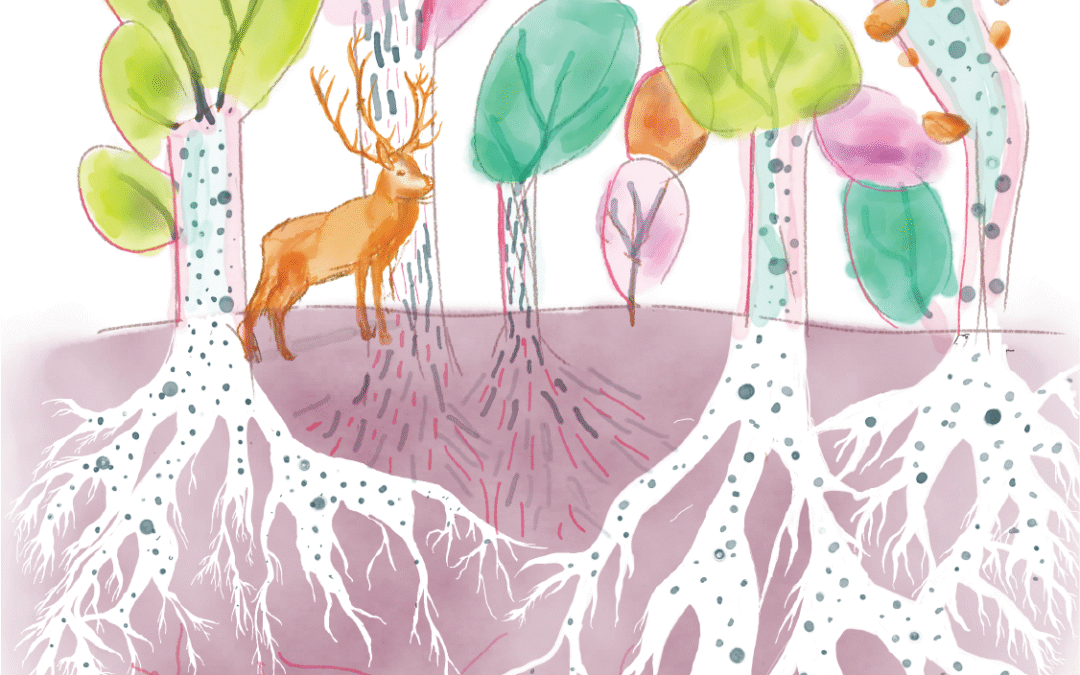Plants are social beings with their own storytelling and resource-sharing techniques
By Lyndsey Redmann
John Muir once said, “In every walk with nature, one receives far more than (she) seeks.” The quiet and cohesive ways of the woods are full of curiosities, including a hidden world right under our feet.
There’s a conversation happening, a sort of “tree talk” in an underground social network some call the “wood wide web.” Plants are social beings and have their own storytelling techniques. Through this system, they are able to exchange resources and signals and connect to other trees and plants. These underground pathways are made up of tiny, sponge-like white fungal threads called mycelium. Masses of these fibers make up the mycorrhizal networks which entangle and branch out vastly to other plants and trees. The relationship between trees and fungi is mutually beneficial, as the trees fuel the fungi to scavenge the soil for nutrients which are shared, absorbed and consumed by the trees. These sophisticated and intelligent relationships between plants express similar qualities to those of human families. When one is sick or struggling, a mother tree (who has the most fungal connections) can offer support and distribute resources. They will even send signals to defend against insect predators such as aphids or beetles.
The forest, and world of plants in general, in richly sprinkled with the shimmer of enchantment. Trees are capable of charming qualities as they care for others in their community, mourn the loss of others, make mischief, and tend to their families. Life, death, and regeneration are all shared information in these underground pathways as a curious language in an unseen world. Next time you take a walk in the woods and look up at the trees, just remember the real magic is in the mineral horizons down below your feet.

